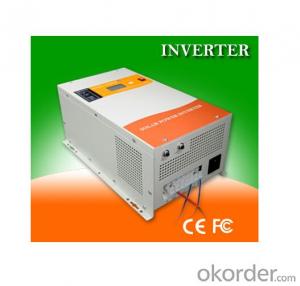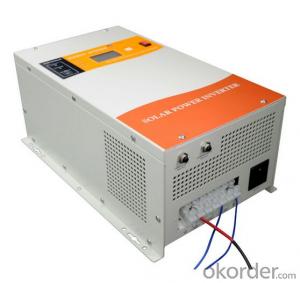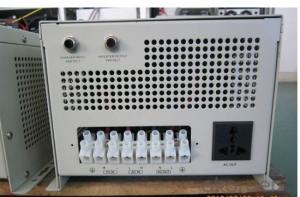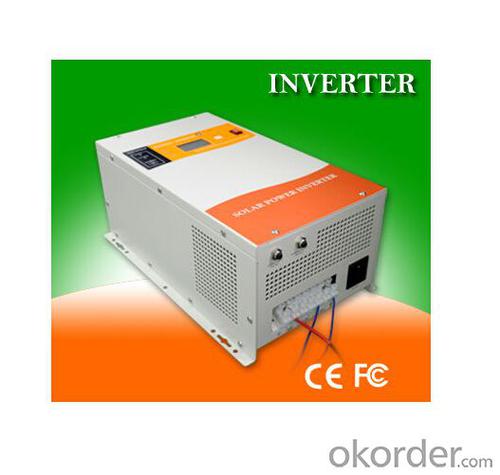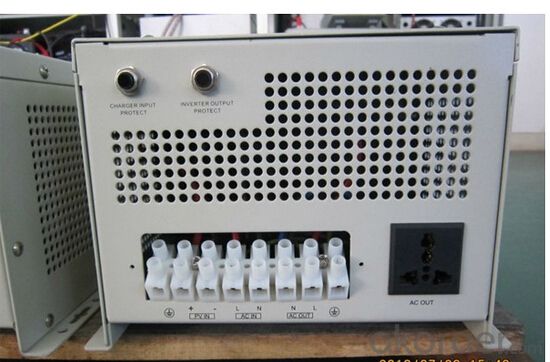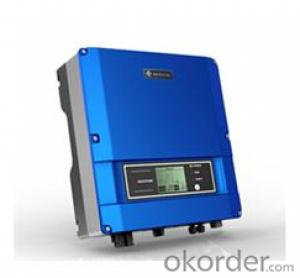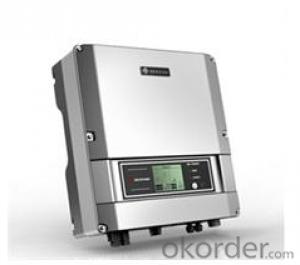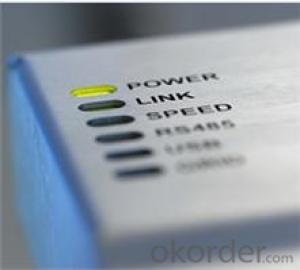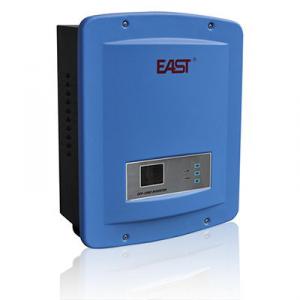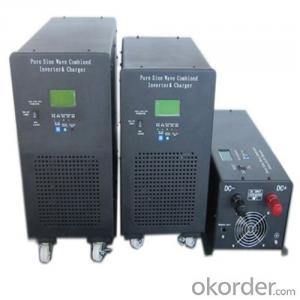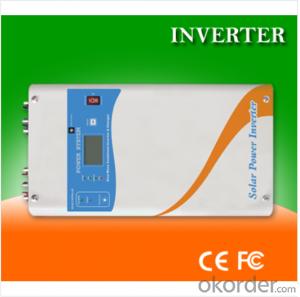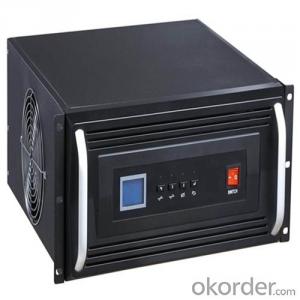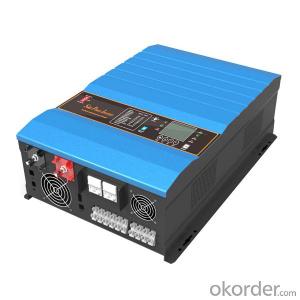30 Amp Solar Inverter 1000w 2000w 3000w Pure Sine Wave Inverter with MPPT Controller
- Loading Port:
- China main port
- Payment Terms:
- TT OR LC
- Min Order Qty:
- 10 pc
- Supply Capability:
- 10000 pc/month
OKorder Service Pledge
OKorder Financial Service
You Might Also Like
1.Specifications
1. Copper transformer
2. solar inverter
3. With Mppt charge controller
4. Pure sine wave
5. Sample available
1000w 2000w 3000w pure sine wave inverter with MPPT controller
2. Features
1.Pure sine-wave out put,can be used with different domestic appliance TV,Refrigerator,Fan,Air conditioner ,Induction cooker,micro-wave oven etc.
2. Generator compatibly and external battery connection achievable.
3. Generator compatible
Hybrid Inverter | ||
MPPT solar controller function | ||
Rated Voltage | 12/24V DC | |
Rated Charge current | 40A | |
Load current | 15A | |
Input voltage range | 15-55V DC | |
Max. PV open circuit array voltage | 55V DC | |
Typical idle consumption | At idle< 10mA | |
Overload protection(DC load) | 2.0*Inom>5s 1.5*Inom>20s 1.25*Inom temperature controlled | |
Bulk charge | 14.6V(default) | 29.2V(default) |
Floating charge | 13.4V(default) | 26.8V(default) |
Equalization charge | 14.0V(default) | 28.0V(default) |
Over charge disconnection | 14.8V | 29.6V |
Over charge recovery | 13.6V | 27.2V |
Over discharge disconnection | 10.8V(default) | 21.6V(default) |
Over discharge reconnection | 12.3V | 24.6V |
Temperature compensation | 13.2mV/C | 26.4mV/C |
Lead acid battery settings | Adjustable | |
NiCad battery settings | Adjustable | |
Load control mode | 1.Low Voltage Reconnect(LVR):Adjustable 2.Low Voltage Disconnect(LVD):Automatic disconnection 3.Reconnection:Includes warning flash before disconnect and reconnection | |
Low voltage reconnect | 12.0-14.0Vdc | 24.0-28.0Vdc |
low voltage disconnet | 10.5-12.5Vdc | 21.0-25.0Vdc |
Ambient temperature | 0-40°C(full load) 40-60°C(de-rating) | |
Altitude | Operating5000m,Non-Operating 16000m | |
Protection class | IP21 | |
Battery temperature sensor | BTS-optional remote battery temperature sensor for increased charging precision | |
Terminal size(fine/single wire) | #8 AWG | |
PV inverter battery priority | |||||||
MODEL | 1000w | 1500w | 2000w | 3000w | |||
Input Voltage Waveform | Sinusoidal (utility or generator) | ||||||
Nominal Input Voltage | 230Vac | ||||||
Low Line Disconnect | 155Vac±4% | ||||||
High Line Disconnect | 265Vac±4% | ||||||
Max AC Input Voltage | 270Vrms | ||||||
Nominal Input Frequency | 50Hz/ 60Hz (Auto detection) | ||||||
Over-Load Protection | Circuit breaker | ||||||
Output Short Circuit Protection | Circuit breaker | ||||||
Efficiency (Line Mode) | >95% | ||||||
Transfer Switch Rating | 30A | ||||||
Transfer Time(Ac to Dc) | 20ms (typical) | ||||||
Output Voltage Waveform | Sine wave | ||||||
Rated Output Power (W) | 1000W | 1500W | 1500W | 2000W | 2000W | 3000W | 3000W |
Power Factor | 1 | ||||||
Nominal Output Voltage (V) | 230Vac | ||||||
Output Voltage Regulation | ±10% rms | ||||||
Nominal Efficiency | >80% | ||||||
Nominal DC Input Voltage | 12V | 12V | 24V | 12V | 24V | 12V | 24V |
Nominal Charge Current | 35A | 45A | 35A | 65A | 35A | 75A | 45A |
Charge Current Regulation | ± 5A | ||||||
Battery initial voltage | 0 –15.7 Vdc /31.4Vdc(can operate with 0V battery) | ||||||
Communication: | RJ11 (Used for factory testing. No customer interface available) | ||||||
Safety Certification | CE(EN60950) | ||||||
EMI Classification | EN50091-2, CLASS A | ||||||
Operating Temperature Range | 0°C to 40°C | ||||||
Storage temperature | -15ºC ~ 60ºC | ||||||
Operation humidity | 5% to 95% | ||||||
Audible Noise | 60dB max | ||||||
Cooling | Forced air, variable speed fan | ||||||
3.FAQ
Q1: How to choose a right inverter?
A1:Tell us your demand, then our sales will recommend a suitable inverter to you.
Q2: What's the different between inverter and solar inverter?
A2: Inverter is only accept AC input, but solar inverter not only accept AC input but also can connect with solar panel to accept PV input, it more save power.
Q3: How about the delivery time?
A3: 7 days for sample; 25 days for bulk order.
Q4: What is the warranty of inverter?
A4: One year warranty on Must-Solar product.
Q5: How to solve the technical problem?
A5: 24 hours after-service consultancy just for you and to make your problem to solve easily.
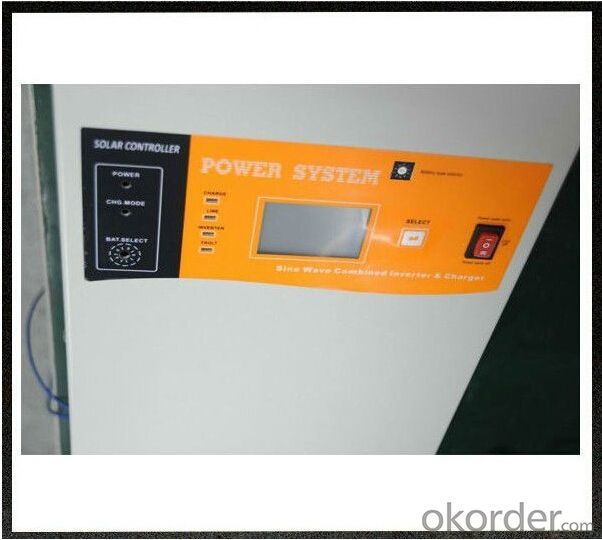
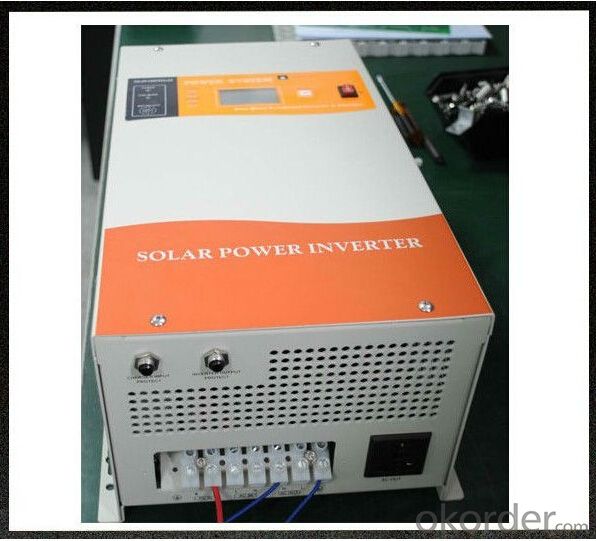
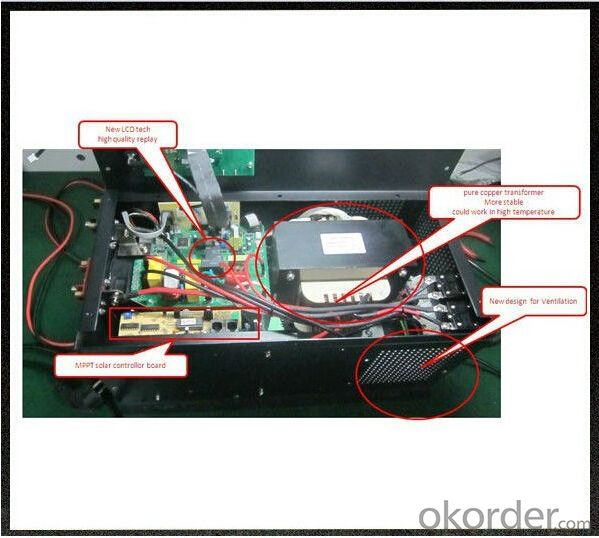
- Q: Can a solar inverter be used with solar-powered streetlights?
- Yes, a solar inverter can be used with solar-powered streetlights. A solar inverter is responsible for converting the direct current (DC) produced by solar panels into alternating current (AC) that can be used to power various electrical devices, including streetlights. By integrating a solar inverter into the system, solar-powered streetlights can efficiently utilize the energy captured from the sun to illuminate the streets.
- Q: What are the potential risks of overloading a solar inverter?
- The potential risks of overloading a solar inverter include overheating, reduced lifespan of the inverter, and even permanent damage to the equipment. Overloading can also result in power fluctuations and instability in the electrical system, leading to potential safety hazards. It is crucial to ensure that the solar inverter is appropriately sized and capable of handling the electrical load to avoid these risks.
- Q: Can a solar inverter be used in areas with high levels of electromagnetic interference (EMI)?
- Yes, a solar inverter can be used in areas with high levels of electromagnetic interference (EMI) as long as it is properly shielded and designed to withstand such conditions. However, it is important to choose an inverter that meets the necessary EMI compliance standards to ensure reliable and efficient operation in these environments.
- Q: Can a solar inverter convert DC power to AC power?
- Yes, a solar inverter can convert DC power generated by solar panels into AC power suitable for household or grid use.
- Q: How does a solar inverter handle power factor optimization?
- A solar inverter handles power factor optimization by ensuring that the power generated by the solar panels is synchronized with the grid's voltage and frequency. It adjusts the power factor by actively controlling the flow of current between the solar panels and the grid, allowing for efficient power transfer and minimizing reactive power consumption.
- Q: Can a solar inverter be used with both AC and DC power sources?
- No, a solar inverter is designed to convert DC (direct current) power generated by solar panels into AC (alternating current) power for use in the electrical grid or to power AC appliances. It is not intended to convert AC power into DC power.
- Q: Can a solar inverter be used with a solar-powered CCTV system?
- Yes, a solar inverter can be used with a solar-powered CCTV system. A solar inverter is responsible for converting the direct current (DC) produced by solar panels into alternating current (AC) that is used to power electrical devices. In the case of a solar-powered CCTV system, the solar panels generate DC electricity, which is then fed into the solar inverter to convert it into AC power, enabling it to operate the CCTV cameras and other necessary equipment.
- Q: What is the difference between a centralized and decentralized solar inverter system?
- A centralized solar inverter system involves connecting multiple solar panels to a single inverter, with all the panels connected in series. The combined DC power generated by the panels is then converted into AC power by the centralized inverter. On the other hand, a decentralized solar inverter system, also known as microinverters or power optimizers, consists of each solar panel having its own dedicated inverter. In this system, each panel operates independently and converts its DC power into AC power directly at the panel level. The main distinction between the two systems lies in their architecture and power conversion methods. In a centralized system, the overall power output of the entire array depends on the performance of a single inverter. If any panel in the array underperforms due to shading or malfunction, it can significantly impact the overall system's performance. Additionally, a single inverter can limit design flexibility and system scalability. In a decentralized system, each panel operates independently, allowing for greater flexibility and optimization. The individual inverters in a decentralized system can maximize the power output of each panel, regardless of shading or performance variations. This also means that the overall system performance is less affected by the underperformance of a single panel. Moreover, decentralized systems offer better scalability as additional panels can be easily added without the need for significant system redesign. Decentralized systems also provide improved monitoring capabilities, as each inverter can provide real-time data on individual panel performance. This simplifies troubleshooting, maintenance, and issue identification within the solar array. To summarize, while a centralized solar inverter system is a simpler and more cost-effective option, a decentralized system offers better optimization, scalability, monitoring, and performance reliability. Choosing between the two systems depends on factors such as system size, shading conditions, budget, and desired level of control and flexibility.
- Q: How does a solar inverter handle low light conditions or cloudy days?
- A solar inverter handles low light conditions or cloudy days by adjusting its power output to match the available sunlight. It is designed to maximize the energy conversion efficiency even in low light situations, allowing for continuous power generation from the solar panels.
- Q: Can a solar inverter be used with a hybrid solar power system?
- Yes, a solar inverter can be used with a hybrid solar power system. A hybrid solar power system typically consists of both solar panels and a secondary power source, such as batteries or a diesel generator. The solar inverter converts the direct current (DC) power generated by the solar panels into alternating current (AC) power that can be used to power appliances and devices in the home or business. Additionally, the solar inverter can also manage the flow of power between the solar panels, the batteries, and the grid, optimizing energy usage and ensuring a reliable power supply.
Send your message to us
30 Amp Solar Inverter 1000w 2000w 3000w Pure Sine Wave Inverter with MPPT Controller
- Loading Port:
- China main port
- Payment Terms:
- TT OR LC
- Min Order Qty:
- 10 pc
- Supply Capability:
- 10000 pc/month
OKorder Service Pledge
OKorder Financial Service
Similar products
Hot products
Hot Searches
Related keywords
